If you’re disappointed by soggy breading, uneven crust, or that perfect crunch always slipping away, you’re not alone. Crispy chicken can seem elusive, but it doesn’t have to be.
The truth? Simple tweaks can transform your chicken from mediocre to a restaurant-level masterpiece. Whether you’re frying, baking, or air-frying, mastering just a few key techniques will work wonders.
Ready to leave mushy coatings and mediocre meals behind? Here are the most common crispy chicken mishaps—and how to fix them fast!
1. Not Patting Dry
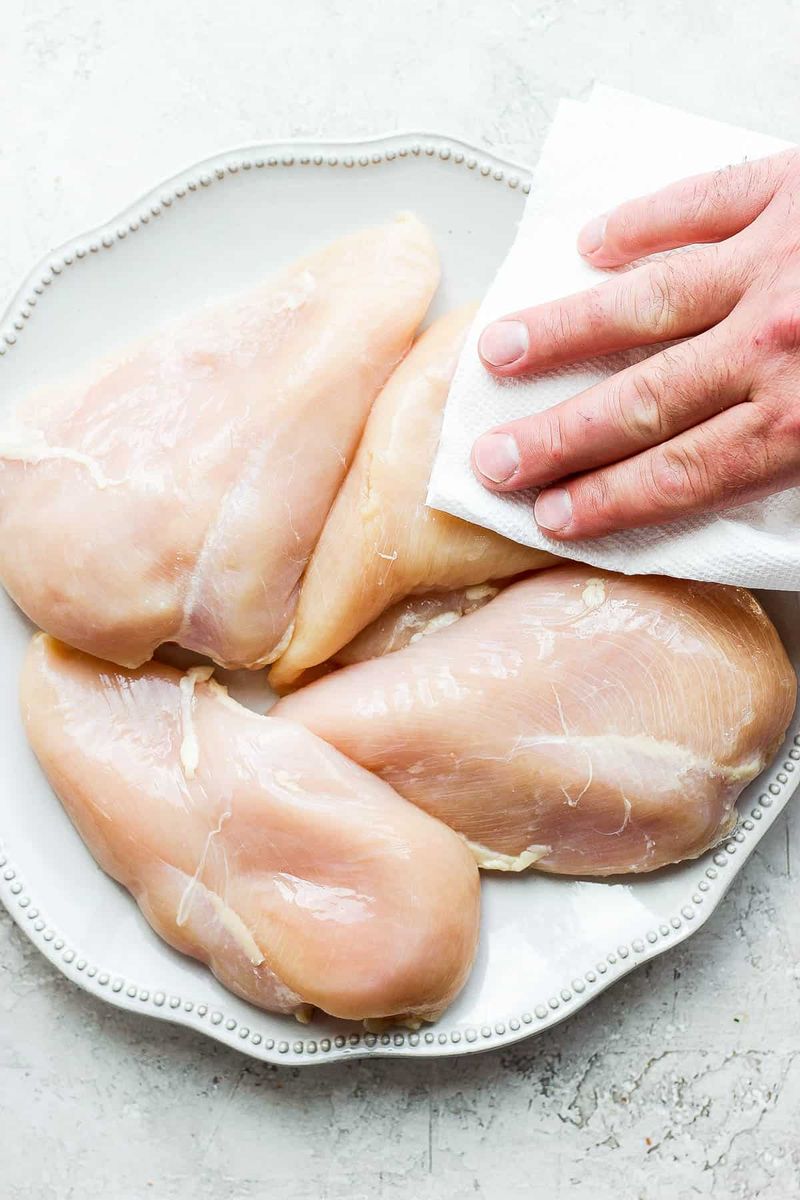
Skipping the step of patting your chicken dry? That leftover moisture is a major reason your coating refuses to stick. Excess water on the surface prevents flour from adhering properly, leading to patchy or sliding breading.
Use paper towels to blot the chicken thoroughly. Removing this moisture is your first step toward achieving that addictive crunch. It’s a small detail, but it makes a world of difference.
2. Skipping the Flour
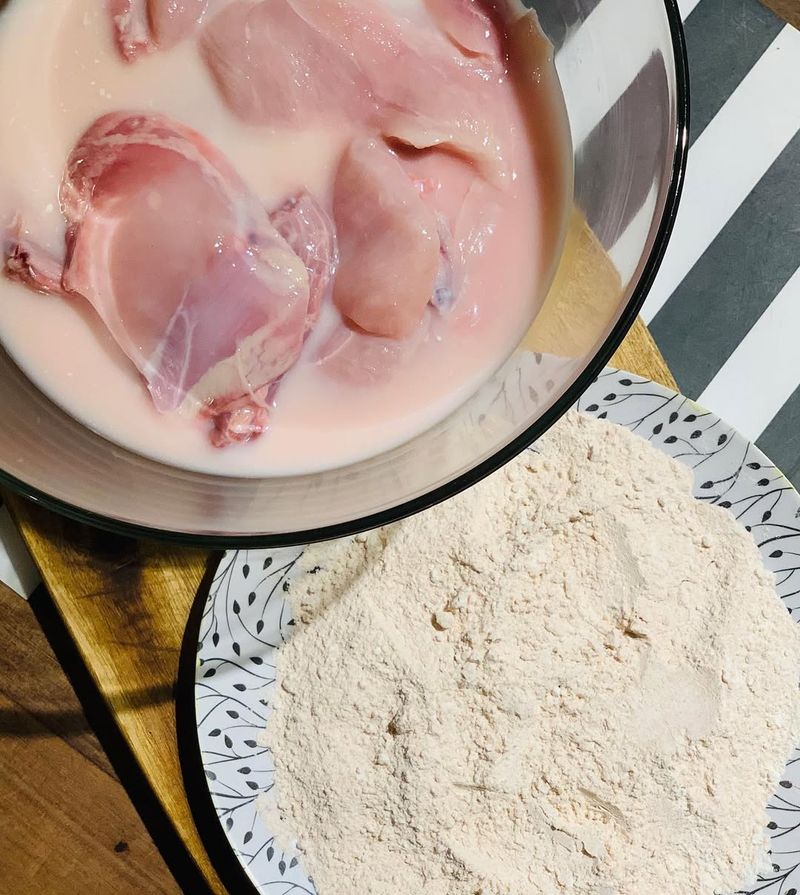
If you head straight for the egg wash without a flour layer, your breading is missing a crucial foundation. Flour acts like “double-sided tape,” gripping the chicken on one side and the egg mixture on the other.
A quick dusting of flour is all it takes to help your batter stick. It also seals the surface of the chicken, reducing moisture that could cause soggy spots.
3. Wrong Egg Wash Ratio
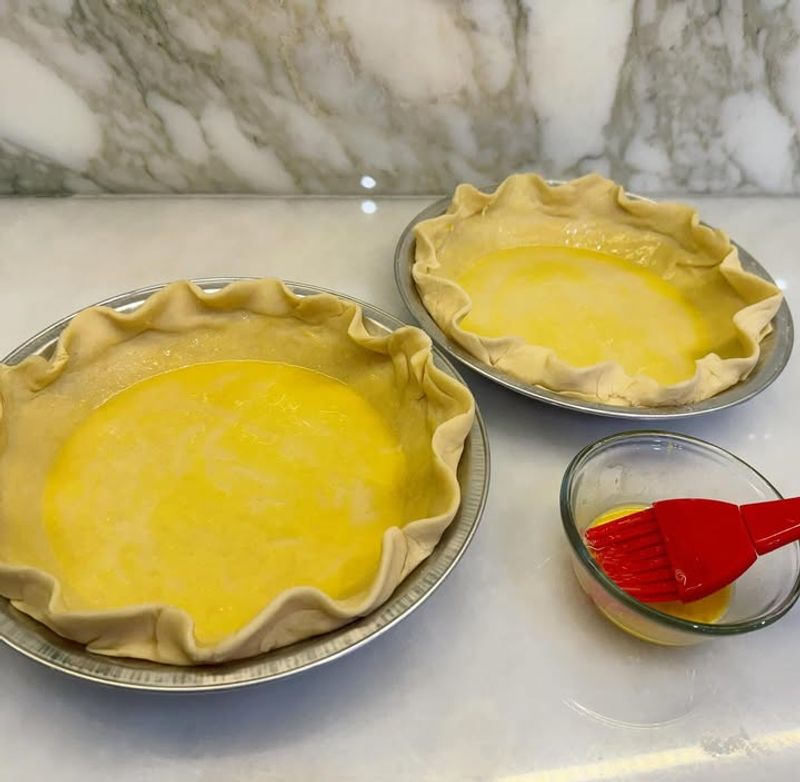
An egg wash that’s too thick or too watery can ruin your coating. If there’s too much liquid, the breadcrumbs will slide right off. Too little, and they won’t cling properly.
Keep it around two eggs per tablespoon of water or milk, and whisk until fully combined. This creates a balanced consistency that lightly coats the chicken before you apply the crumbs.
4. Overcrowding the Pan
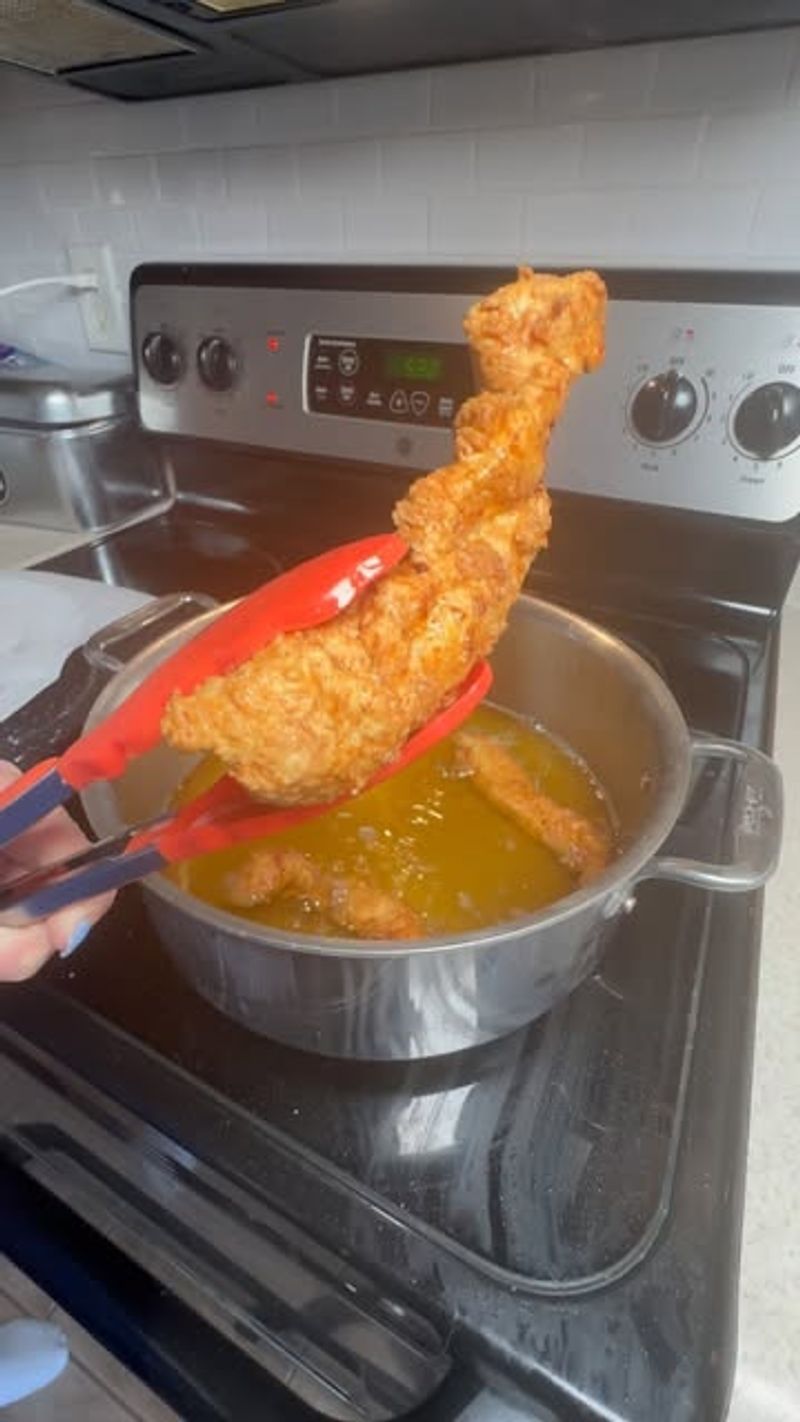
Loading up the pan with too many chicken pieces at once? That drops the oil’s temperature and leads to uneven browning. You’ll end up with greasy, soft spots instead of that uniform crunch.
Fry in small batches, making sure each piece has space to breathe. Maintaining the right oil temperature is essential for that golden finish. Yes, it takes a bit more time, but the trade-off is consistently crispy, perfectly cooked chicken.
5. Ignoring Resting Time
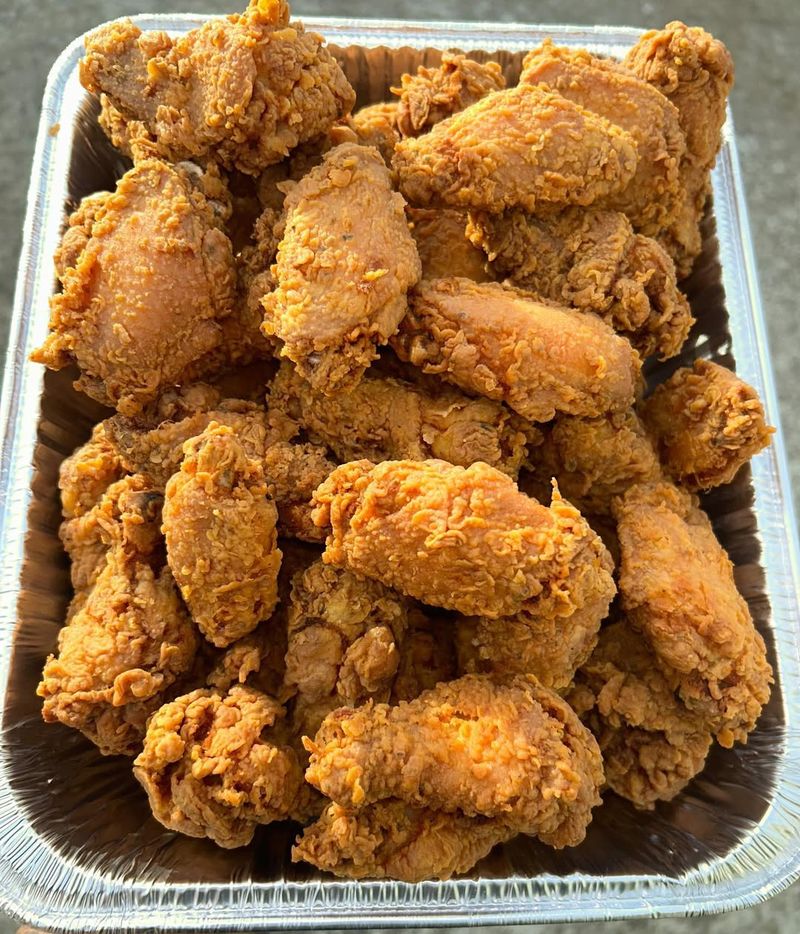
Are you frying the moment after breading? Giving your chicken a brief rest—about 10-15 minutes—lets the flour and egg bond more effectively. This pause can drastically reduce “breading fall-off” in the pan.
Use a wire rack or plate for resting. The coating sets and clings better, so it’s less likely to peel away during cooking.
6. Not Using a Wire Rack
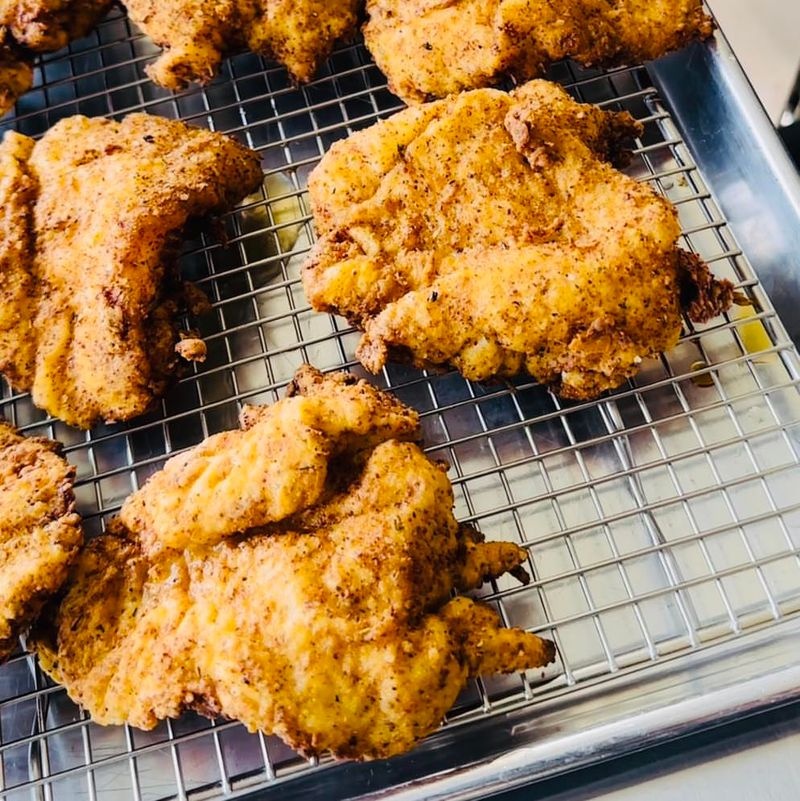
If you’re baking or air-frying on a flat tray, you might end up with a soggy underside. A wire rack elevates the chicken, letting hot air circulate fully around each piece for even crispness.
Without that airflow, the bottom can become damp from steam or residual juices. A small rack fixes this easily. It’s a simple addition that upgrades your entire cooking process.
7. Old Oil Usage
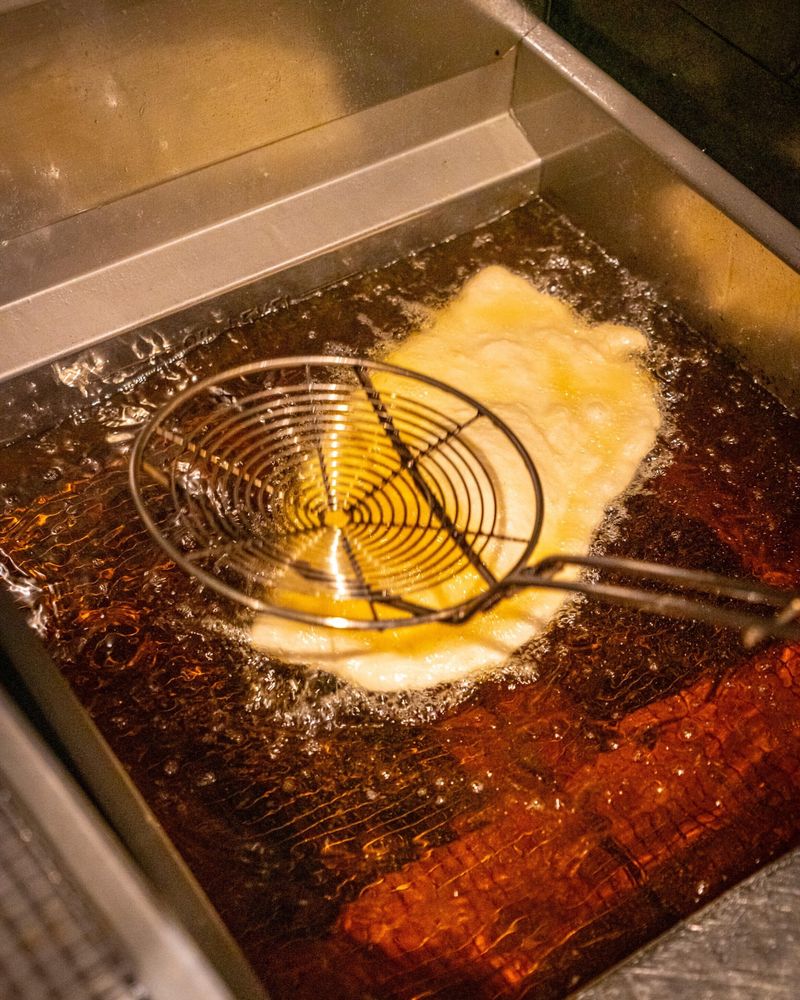
Oil that’s been used multiple times can break down, causing off-flavors and inconsistent frying. No matter how flawless your technique, stale oil can sabotage crispiness and taste.
Swap out or filter your oil regularly to keep it fresh. You’ll notice a cleaner flavor and more reliable texture. Investing in fresh oil is an easy way to guarantee a superior crunch and zero funky aftertaste.
8. Incorrect Oil Temperature
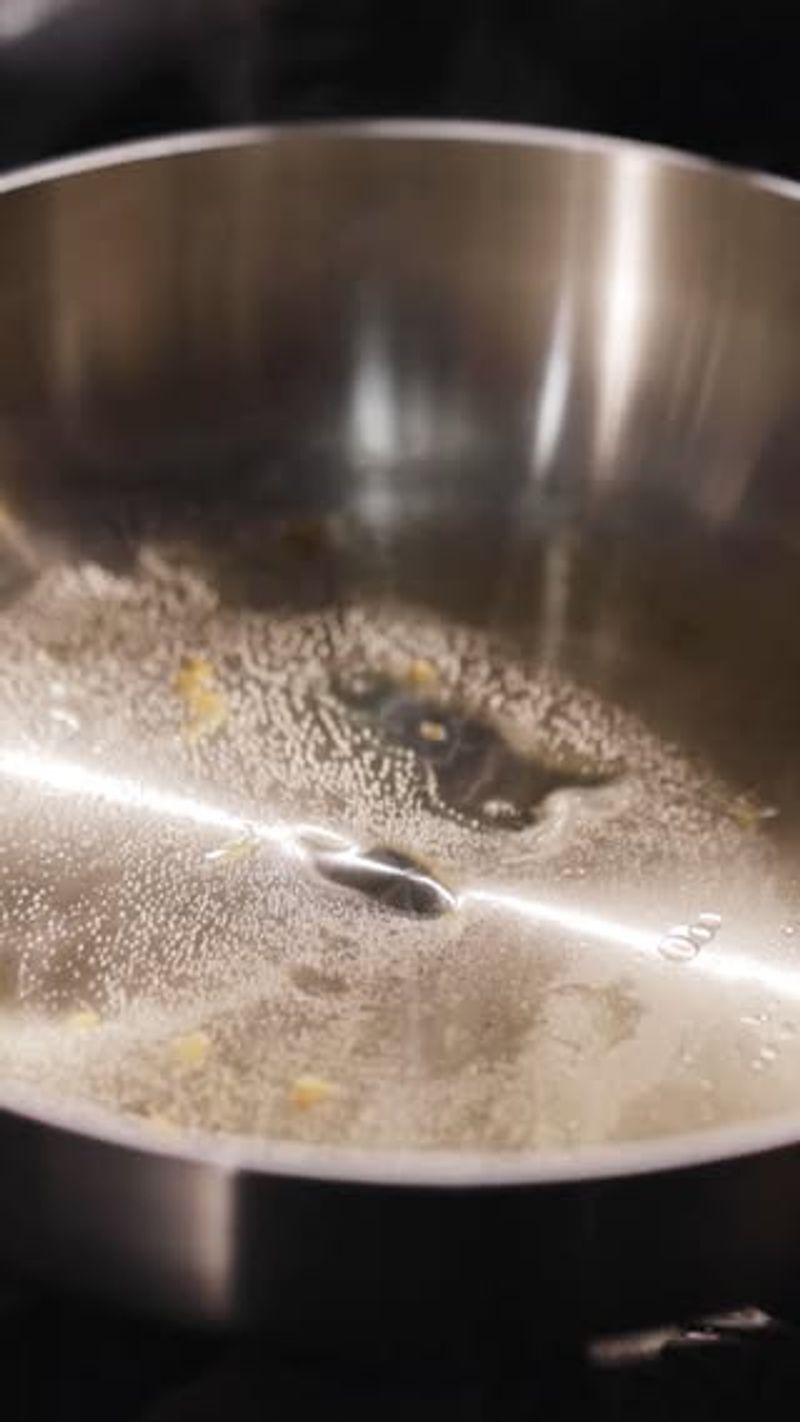
If your oil is too cool, your chicken soaks up grease and stays limp. Too hot, and the exterior scorches before the meat’s cooked through. The sweet spot is around 350°F (175°C), ensuring a perfectly browned outside and juicy inside.
A cooking thermometer removes the guesswork. Keep adjusting the heat as you cook in batches. You want to maintain that magic temperature to get consistent, mouthwatering results. Precision here is the difference between overcooked, charred breading and a crunchy, succulent masterpiece.
9. Not Seasoning Flour
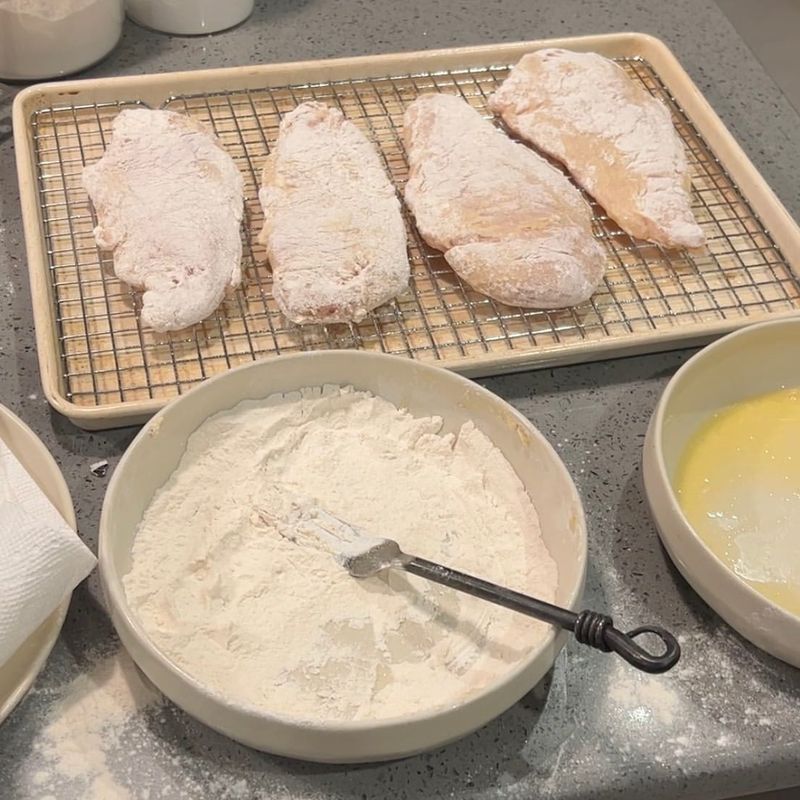
Tasteless breading? You probably forgot to add spices to your flour. Salt, pepper, garlic powder, paprika—whatever your favorite seasoning might be—should go in at this stage.
When your flour is well-seasoned, every layer of your chicken will be flavorful. Don’t rely on sauce alone; build flavor at every step.
10. Reusing Marinade
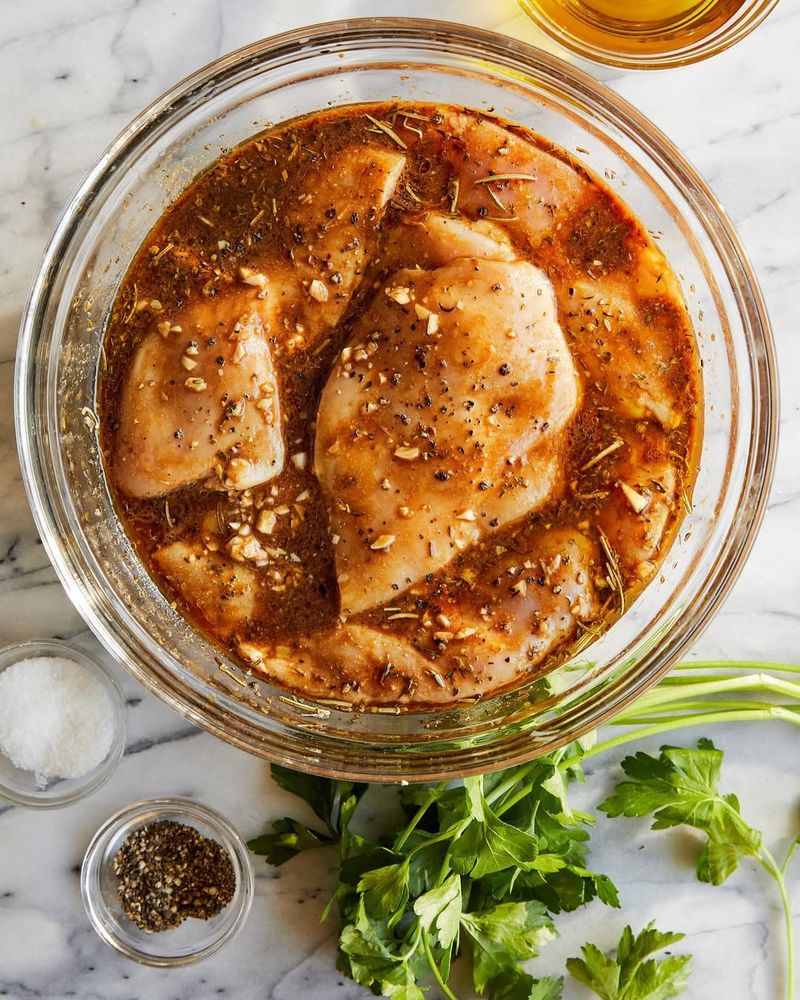
Marinade can add flavor, but if you dip your chicken back into used marinade, you risk contamination and watered-down breading. This leftover liquid can undermine crispness.
If you need a sauce or glaze from the marinade, boil it separately to kill bacteria. Otherwise, discard and use fresh for basting. That way, you stay food-safe and your chicken stays reliably crisp.
11. Inconsistent Breading
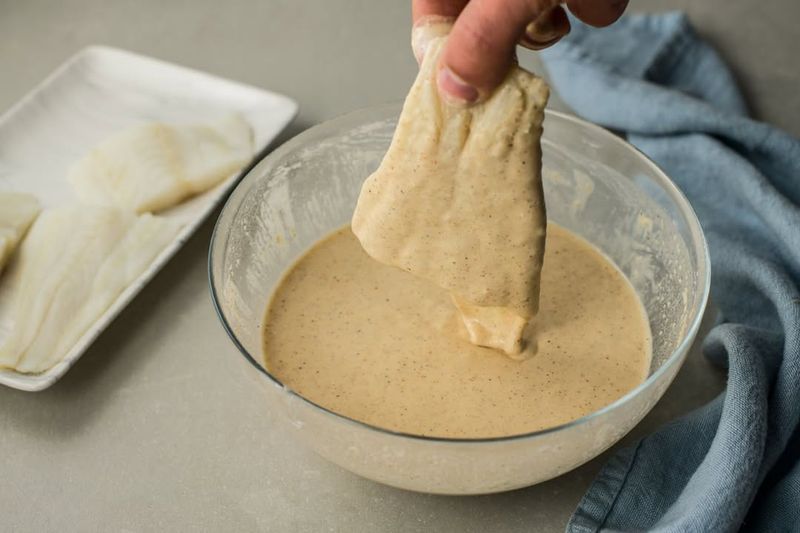
Breading that’s clumpy or patchy creates uneven browning. A steady, methodical approach is key: Dredge in seasoned flour, shake off excess, dip in egg wash, and coat with breadcrumbs, covering every nook and cranny.
Rushing the process often leads to bare spots or thick lumps that either burn or fail to crisp. Take time to ensure an even layer of each component. The result? Uniformly crunchy chicken that looks as good as it tastes.
12. Double-Dipping in Egg
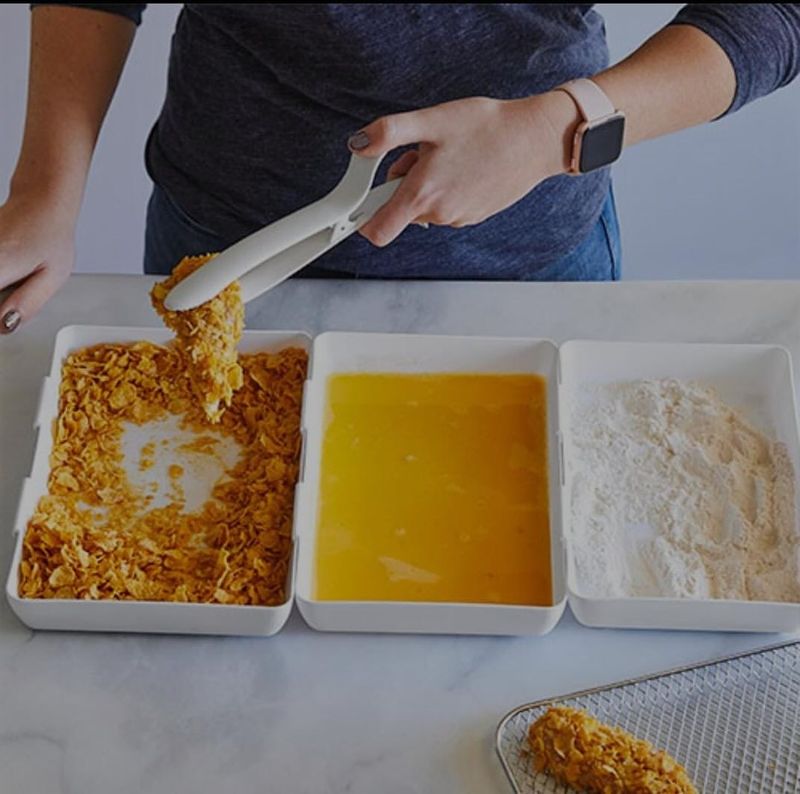
Overzealous dipping can drown the chicken in egg wash, leading to a heavy, uneven crust. Stick to one pass through each stage—flour, egg, breadcrumbs—to maintain the right balance.
Double-dipping might create a chunky exterior that doesn’t fry evenly, causing parts to burn or fall off mid-cook. Keep it clean and simple for a uniform layer that cooks to crispy perfection.
13. Skipping Breadcrumbs
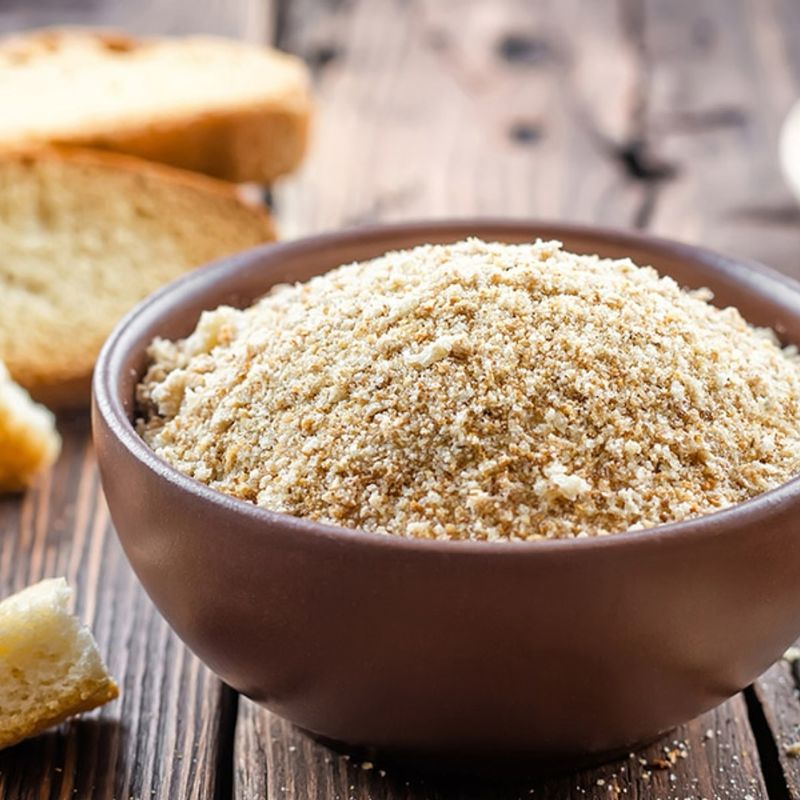
Flour and egg are important, but breadcrumbs (or other crunchy coatings) provide that signature crispy bite. Skipping them entirely often yields a less satisfying texture.
Panko breadcrumbs, crushed cornflakes, or even ground crackers can boost crunch. Play around with different coatings for variety. Your taste buds—and that impressive crunch—will thank you for taking the extra step.
14. Wrong Cooking Vessel
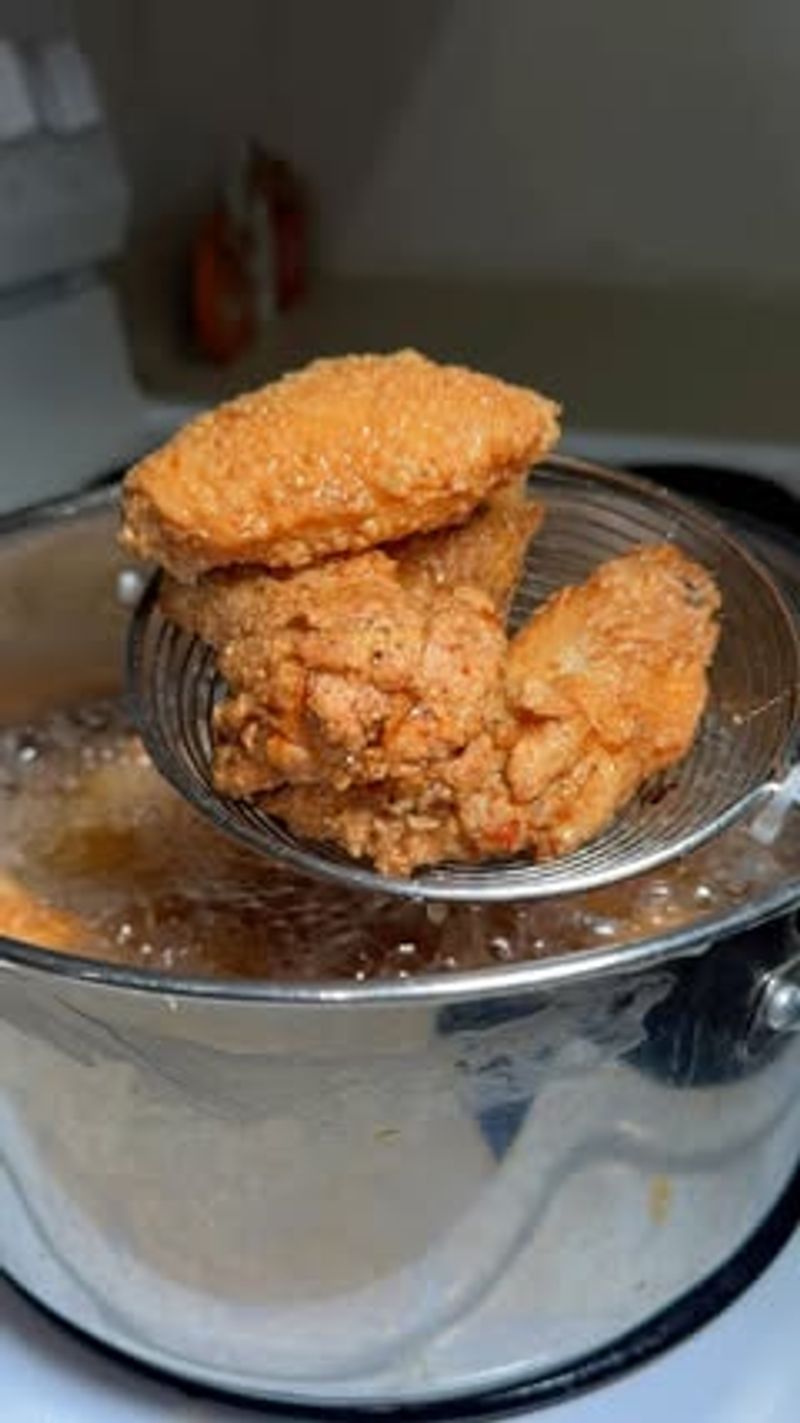
Using a thin skillet or a pan that doesn’t hold heat well can cause temperature fluctuations. Your chicken might brown too fast on the outside while staying undercooked within—or vice versa.
A cast-iron skillet or a deep fryer with a thermostat provides a steadier temperature, key for an evenly crisp texture. Choose sturdy cookware to maintain consistent heat for flawless frying.
15. Improper Storage
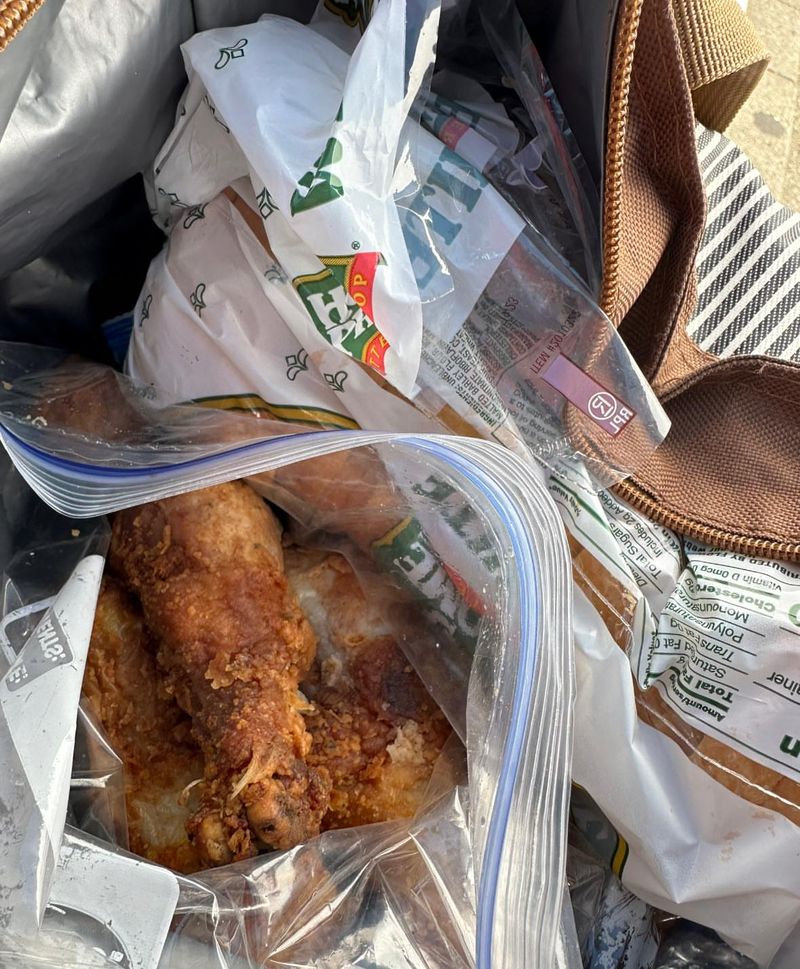
If you just toss freshly fried chicken into a container, steam trapped inside will quickly turn it limp. Let your chicken cool slightly before storing, and consider using a container that allows some airflow or layering with paper towels.
When reheating, opt for an oven or air fryer to revive that crispness. Microwaves tend to zap texture, leaving you with a sad, soggy meal.
16. Battering Too Early
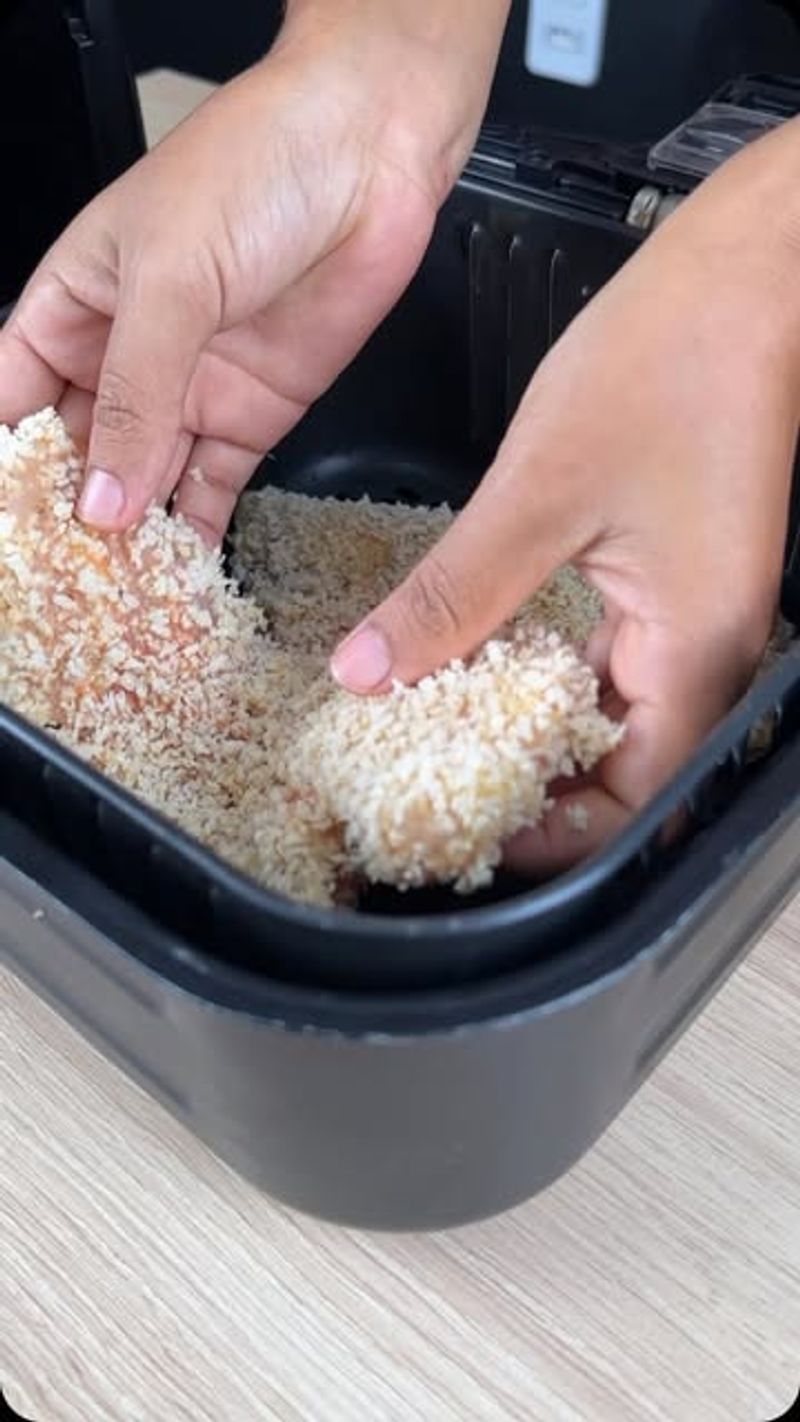
Breading long before cooking? The coating can soak up moisture from the chicken, leading to a soggy outer layer. It also risks clumping as the flour or breadcrumbs take on extra humidity.
Bread just before frying or baking. That way, the coating stays fresh and crackles from the moment it hits the heat. Minimal waiting time between coating and cooking is the best route to peak crispness.
17. Ignoring Bread Type
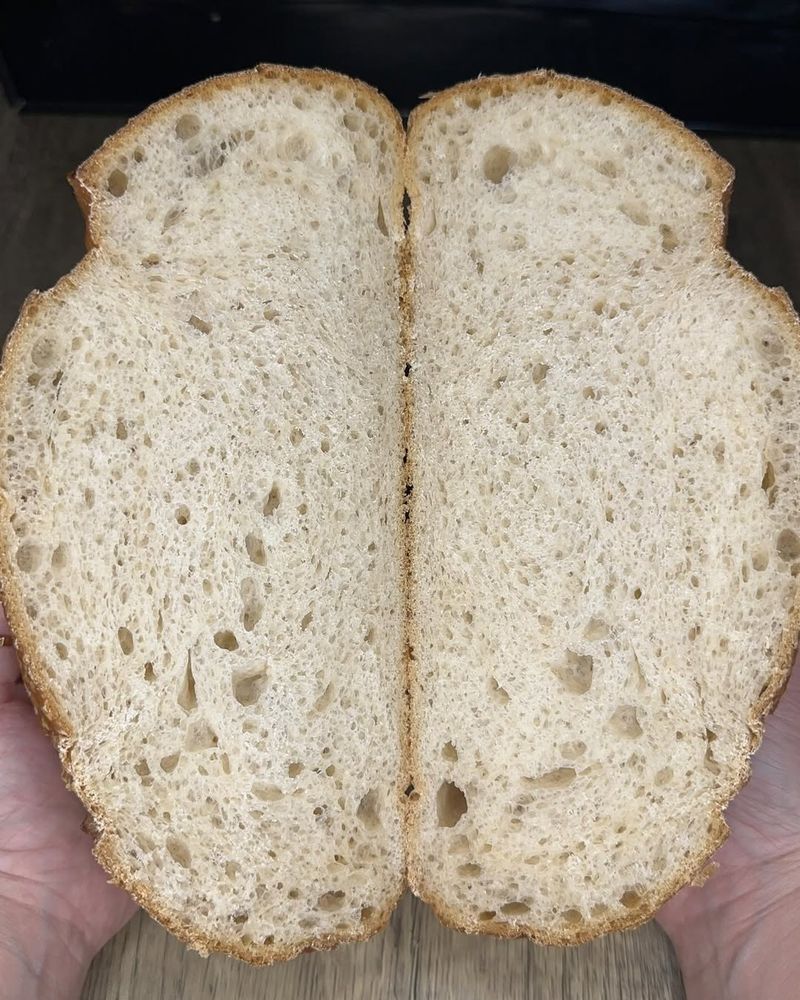
Breadcrumbs aren’t one-size-fits-all. Panko yields a crispier crunch, while fresh breadcrumbs can create a softer, more subtle texture. Crushed cereal or crackers offer yet another unique twist.
Think about the end result you want. Light and airy? Dense and flavorful? Different crumb styles can transform the final taste and mouthfeel of your chicken.
18. Not Letting Oil Drain

Even nicely fried chicken can become oily and limp if you don’t drain it properly. Letting it sit on a paper towel or a rack after frying helps excess grease drip away, preserving that crunchy coating.
If you skip this step, oil pools around the breading, turning it soft and greasy fast. A quick drain is all it takes to keep your chicken consistently crisp.
19. Using Frozen Chicken
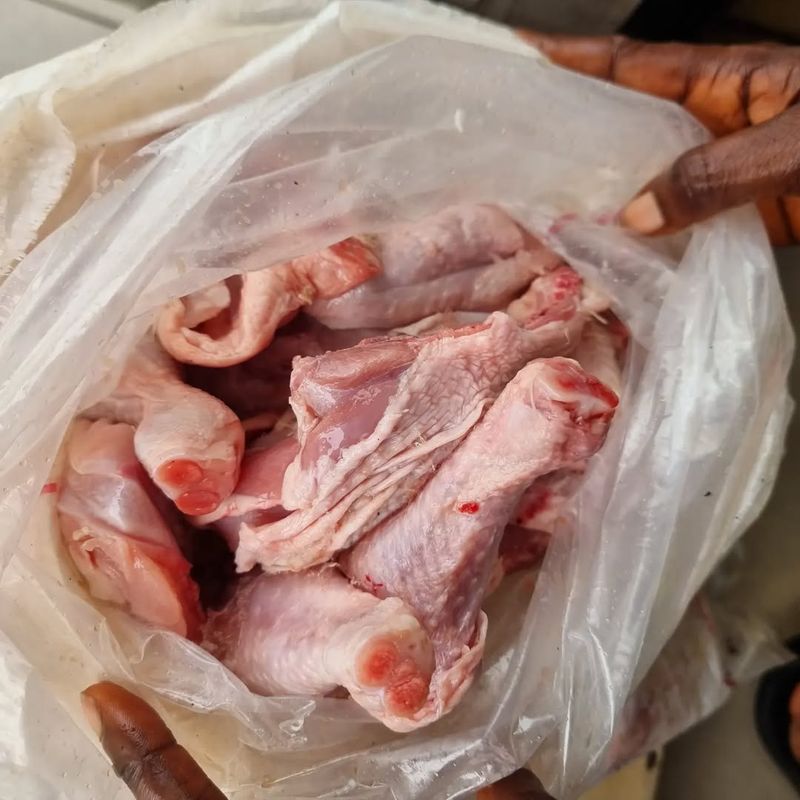
Frozen chicken releases water as it cooks, making it tougher to get that crisp finish. Thawing fully is crucial—otherwise, any moisture on the surface or inside will sabotage your crust.
Set aside enough time for safe, thorough thawing in the fridge. Then pat dry to ensure no extra moisture remains. Your results will instantly improve: more even browning, less risk of sogginess, and a safer cooking process overall.
20. Overlooking Size Consistency
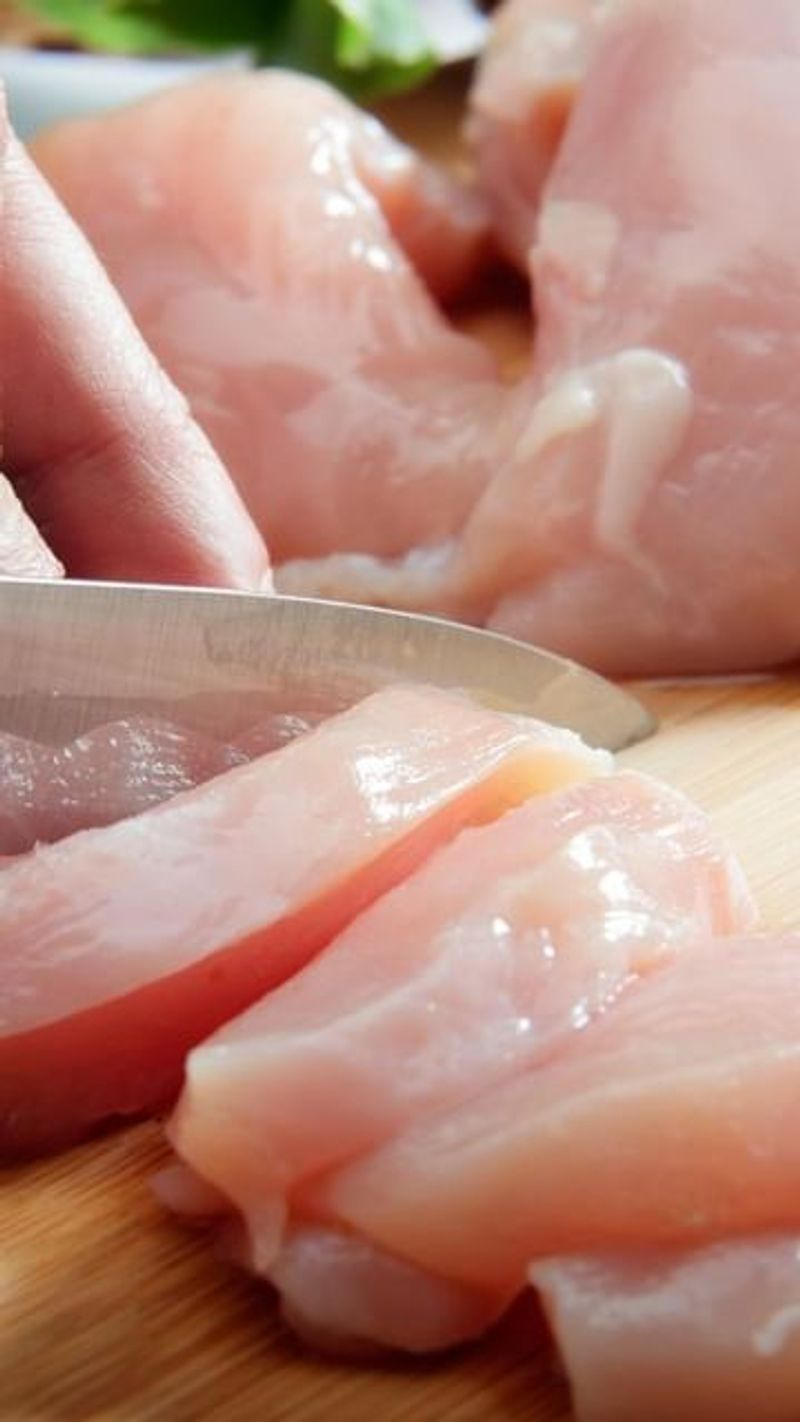
Throwing in a mix of thick breasts, thin cutlets, and random nugget sizes? They’ll cook at wildly different speeds, leading to some pieces drying out while others remain underdone.
Cut your chicken into uniform thickness and shape for predictable cooking times. This helps every piece reach a crispy golden state simultaneously. Consistency in size means consistency in flavor and texture—so every bite is equally satisfying.

